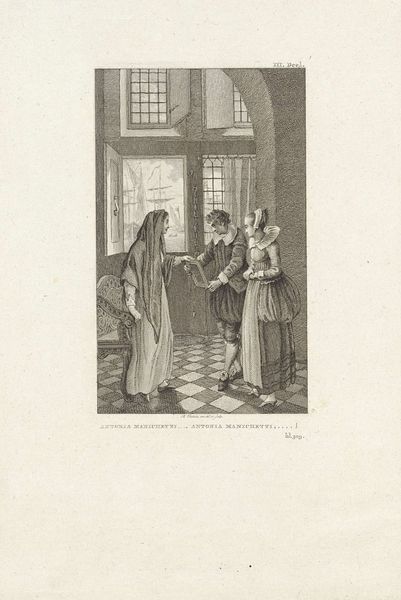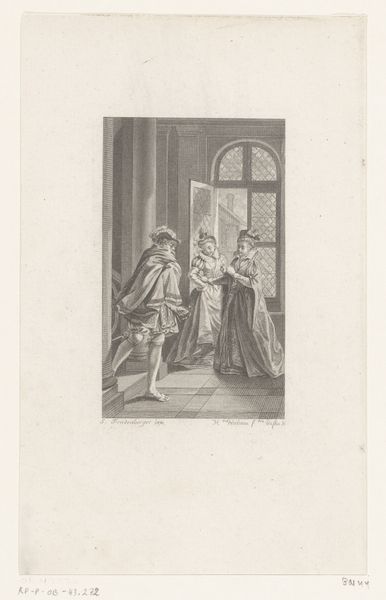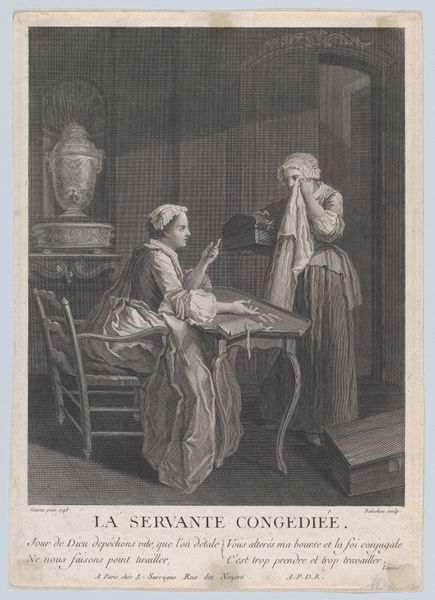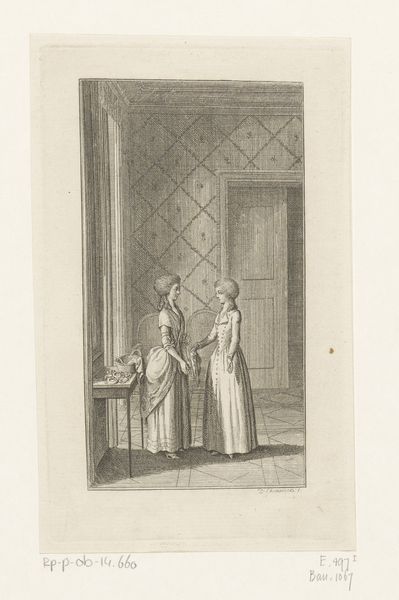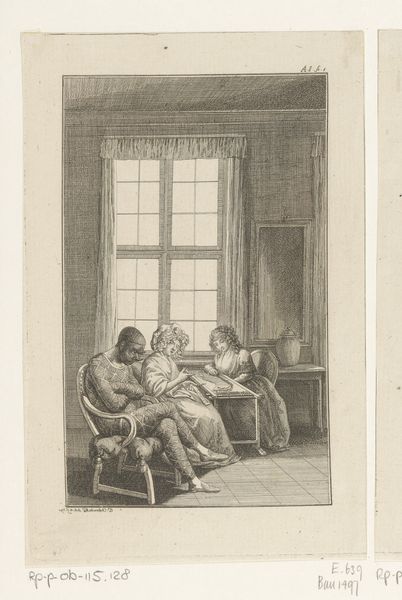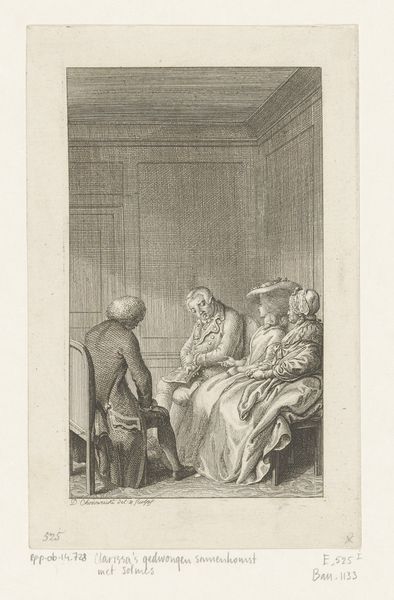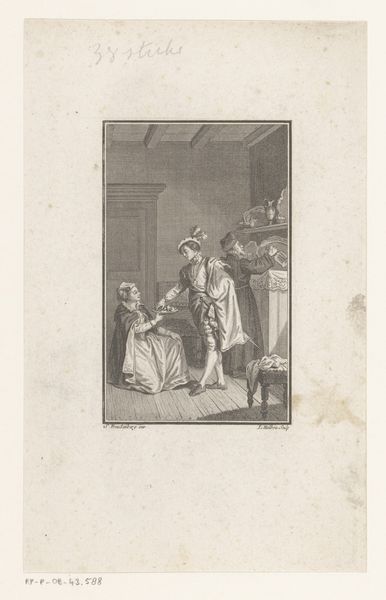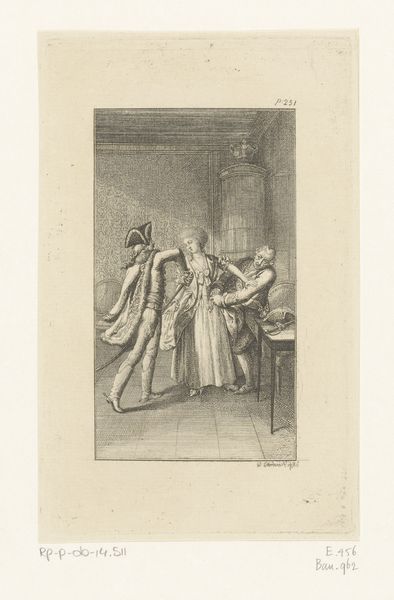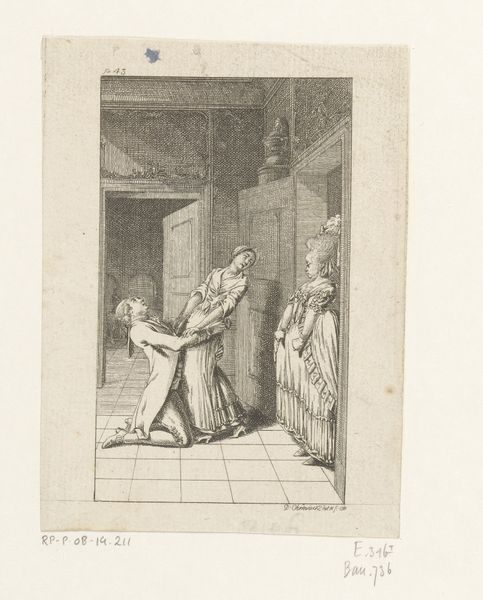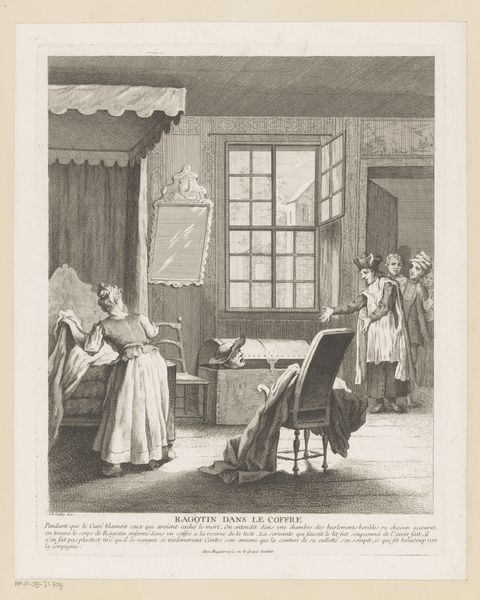
drawing, print, paper, engraving
#
portrait
#
drawing
#
neoclacissism
# print
#
figuration
#
paper
#
intimism
#
line
#
genre-painting
#
history-painting
#
engraving
Dimensions: 178 mm (height) x 109 mm (width) (bladmaal), 164 mm (height) x 100 mm (width) (plademaal), 113 mm (height) x 58 mm (width) (billedmaal)
Curator: The mood strikes me as quite intimate and perhaps melancholic. The figures are confined within the stark lines of the room. Editor: This engraving, “Vignet til Sophies Reise fra Memel til Sachsen,” was created by Peter Haas in 1782. It currently resides in the collection of the SMK, the National Gallery of Denmark. It looks like it was made to be included in a book? Curator: Yes, you're right; a vignette, traditionally, would be on the title page or to decorate sections in a novel. Looking at it now knowing it would accompany text really adds to that initial impression of quiet intensity. Note how Haas utilizes the clean lines to establish the scene's Neoclassical architectural setting but immediately focuses us in on this human tableau. Editor: There's a tension here I can't quite ignore. The central woman, perhaps Sophie herself, sits passively, framed by another woman preparing what seems to be tea. The third appears to be arriving. I can feel echoes of the social expectations and the roles available to women in the late 18th century—a societal cage, really. Curator: Agreed! The very act of serving tea, something so seemingly quotidian, holds within it layers of coded meaning. We read the relationships between women based on these symbolic offerings, even something as seemingly simple as tea sets. Also, note that tiny dog in the foreground – fidelity but perhaps a sign of female subordination? Editor: Certainly, the visual cues create a story and almost invite us to imagine the conversations that take place. And look closer at those conversations as potentially transgressive. Where does this travel narrative take Sophie? Is she actively authoring her journey, or is she beholden to the patriarchal structures implied within this drawing? Curator: These symbols—domestic space, the serving of tea, the faithful dog—are potent reminders of what society then deemed a proper place for women. And the fact that they are represented in print? These assumptions become deeply entrenched in the collective consciousness. Editor: Looking through today's lenses really encourages us to ask even more: what actions were available for her? How was Sophie limited by gender expectations, and what were the nuances of how class, race and other social positions impact these readings? This simple domestic scene raises profoundly intersectional concerns about visibility, voice, and agency. Curator: Thank you for emphasizing that it becomes a window into understanding not only the artwork's intended purpose but its enduring relevance. We can begin to understand the complex symbols underpinning even the quietest scenes of our collective history. Editor: Exactly! And hopefully inspire continued engagement with art to challenge social structures.
Comments
No comments
Be the first to comment and join the conversation on the ultimate creative platform.
